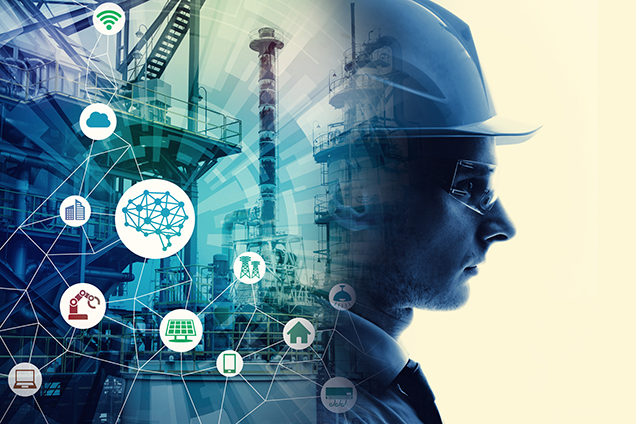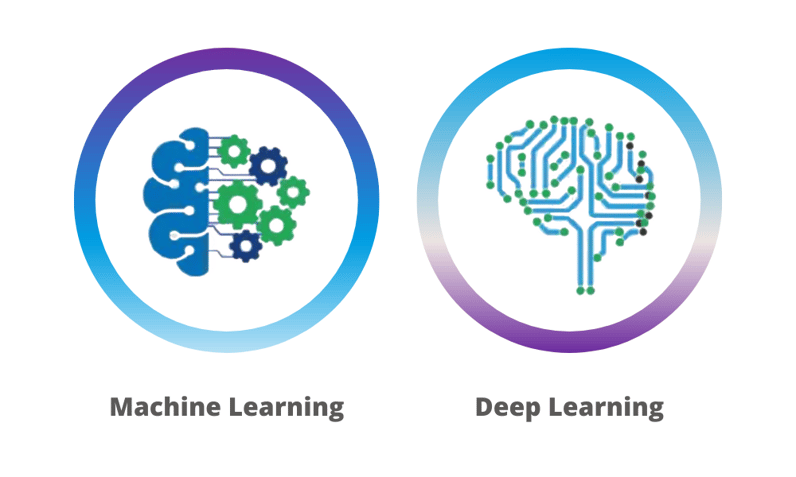
Since the invention of the first statistical algorithms, the progress of AI has been considerable. This "learning" intelligence of the machine offers great opportunities in many sectors, including energy and industry. Indeed, statistical AI models, built on the basis of real industrial data, allow to visualize in real time energy drifts and to identify possible causes, but also to calculate a potential energy gain and to test various approaches to reach it (or even to exceed it!).
After a brief historical review on the origins of artificial intelligence, discover in this article the potential of AI in the industry through the approach of our Data Scientists and a concrete application case on site.
.png?width=796&name=Visuels%20articles%20de%20blog%20(3).png)
Historically, the notion of Artificial Intelligence dates back to the second half of the 20th century: in the 1950s, the first software capable of learning to play chess was created. The term AI was invented in 1956. The term machine learning, in 1959.
Between the 60's and the 90's, computers are not very efficient, technical means are limited... AI is still young. We call this period "the winter of AI".
Between 1996 and 1997, the AI "Deep Blue" - a program launched by IBM - beat the world chess champion!
Again in 2016, the champion of the Go game - a more complex game than chess - is beaten by Deep Mind, an AI programmed by Google, about 20 years earlier than anyone expected!
A simple definition of AI could be: "computer programs that are able to adjust their behavior according to the treatments and actions they have to execute". We speak of "learning" artificial intelligence.
.png?width=796&name=Visuels%20articles%20de%20blog%20(2).png)
Data Science, an inclusive discipline for developing algorithms for AI, is at the heart of 3 themes:
At their convergence, we find different major competences in the field of energy: data manipulation, exploratory analysis, and modeling.
In the industry, we can define a model as a mathematical representation of a phenomenon, for example energy consumption.
The objective of the model is to analyze this phenomenon by simplifying it, i.e. by "reducing" it to the sum of a few influencing variables in order to clarify its understanding. We also talk about explanatory variables, or Features (e.g. a data from the production).

Machine learning and deep learning, two families of models in artificial intelligence
At Energiency, Data Scientists use 2 families of models:
.png?width=795&name=Visuels%20articles%20de%20blog%20(1).png) Diagram illustrating the steps involved in modeling an industrial phenomenon with artificial intelligence
Diagram illustrating the steps involved in modeling an industrial phenomenon with artificial intelligence
The first step is to determine what we want to look for and optimize!By analyzing the industrial context, Data Scientists will then ask the following questions:
A common mistake would be to collect a maximum of data at random. However, the best practice is to start by formulating a problem and then identify the useful data that will help answer the problem.
In the energy domain, these data are typically :
After selecting the right data, the Data Scientists will then perform a cleaning and filtering step to exclude data that are not relevant.
In building artificial intelligence models, we will of course use the initial data cleaned beforehand, but also new data built by the Data Scientists. This is called Feature Engineering.
These data are calculated from the raw variables, but have greater explanatory power. Generally, these types of constructed variables are what improve the accuracy of the models.
Example of calculated variables:
Then comes a period of training of the model, in order to adjust its accuracy by iterations.
There are feedback loops to correct errors at each stage, depending on the performance obtained: this is the principle of learning the AI model. To learn well, a model must be fed with a "good" variety of data (in terms of history and number of variables available).
After learning, it's time for a test run! To evaluate the relevance of the model, it is subjected to a period of tests, then its predictions are measured against reality. For example, we can make sure that the model adapts well to the stopping and restarting of industrial machines (at the right speed, and with the right orders of magnitude).
The delta then represents the error of the model. If the model is good, the error is centered around 0.
Once the model is sufficiently trained, we can then calculate a potential energy gain. To do this, we look at the most important drifts and, via a hypothesis matrix, we estimate the gains that can be made by using the model.
It is therefore necessary to ensure that the performances are as similar as possible between learning and training (we can say that we have consolidated a generalization of the model to all real situations), while being as precise as possible.
Once again, just like a student learning to perform operations!
Data Scientists start with a potential gain study on historical data (12 to 18 months of records). Our teams will then:
We can identify factors with a significant impact (strong influence), but also other factors that are lighter and can be adjusted manually or automatically, such as the settings of a machine (e.g. temperature of an oven, frequency of maintenance, flow of fluid used, etc.).
This step allows to define a target of potential gain (e.g. percentage of energy savings achievable on a workshop). This energy target will be the "course" to be maintained in all the following steps.
Once the AI models have been tested and sufficiently trained, the data scientists will implement the models in the energy performance software.
The platform allows, among other things, to visualize expenses and to track energy performance in real time. This is also known as an Energy Management System (EMS).
|
💡 More about EMS: Supported by AI, Energy Management Systems facilitate continuous improvement in energy efficiency, by enabling:
|
This configuration will allow, among other things, to visualize:
Once the potential savings have been detected and the platform is operational, the challenge is to be able to make the right assumptions and to take the relevant decisions based on the energy drifts and consumption patterns observed.
The Energy Managers, who are responsible for the operational monitoring of energy consumption and the search for concrete ways to make savings, then start working. Their missions include:
Data Scientists update the models every year - if performance has been good - based on the data collected over the new period.
The overall approach is therefore rooted in a logic of continuous improvement, in order to identify new sources of energy savings, thanks to a very detailed analysis of consumption and influencing factors.

To be effective, AI must be :
But be careful, AI is only a tool! We talk a lot about digital, but digital alone doesn't go very far. Manufacturers need to arm themselves with skills, experience and good human intuition in parallel. This is what we call Human Intelligence.
This is why our teams work closely with industrial sites, industrial directors, maintenance managers, energy managers and operators to adjust models and identify the right corrective measures based on field experience. It is these human exchanges that ensure the quality of our energy saving researches.
To discover a concrete application of the statistical models developed by Energiency, download the success story of SKF, a major global bearing manufacturer:
You will discover:
You are wondering if artificial intelligence and a data science study would allow you to identify new energy saving opportunities?Each industrial situation being unique, do not hesitate to contact us so that we can study your context and your current energy management.
To receive a preview of our news, our attendance at events, we invite you to subscribe to our newsletter.
© 2021 Energiency - All rights reserved | Terms of use - Privacy policy